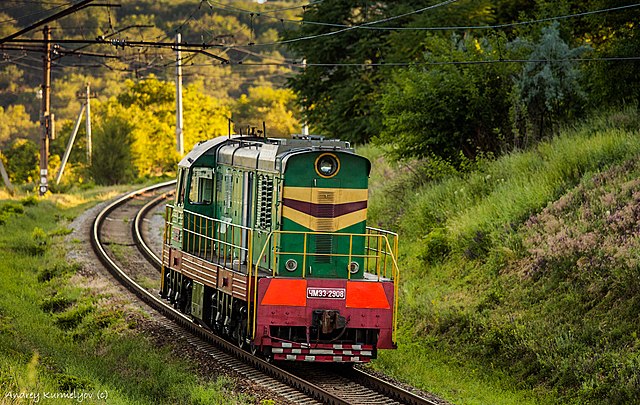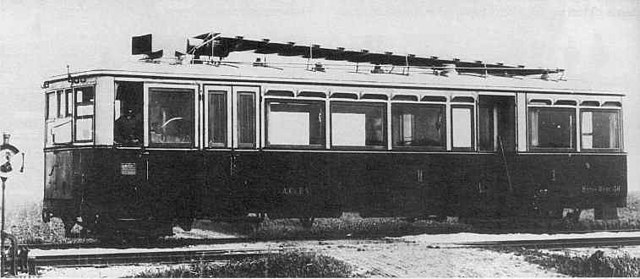Shunting, in railway operations, is the process of sorting items of rolling stock into complete trains, or the reverse. In the United States this activity is known as switching.
A CIE 141 Class shunting the Enterprise rolling stock to enable a NIR Class 111 to haul a service from Dublin Connolly to Belfast Central in 1985
Railway shunting capstan found at site of former Hull and Barnsley Railway sidings south of Springhead works
A heavy steam shunting locomotive, SR Z class, Great Britain
Light dual-mode (electric and diesel) shunter SBB Tem 346 at work on the Swiss Federal Railways
A diesel locomotive is a type of railway locomotive in which the power source is a diesel engine. Several types of diesel locomotives have been developed, differing mainly in the means by which mechanical power is conveyed to the driving wheels. The most common are diesel-electric locomotives and diesel-hydraulic.
The ČKD ČME3, a common example of a diesel shunting locomotive
The InterCity 125 set a speed record – 148 mph (238 km/h) – for a diesel-powered train in 1987. Capable of 125 mph (201 km/h) in regular service, the train consists of two power cars with either seven or eight carriages between them.
These locomotives operated by Pacific National in Australia show three styles of diesel locomotive body: cab unit (front), hood unit, and flat-nose (rear).
Petrol–electric Weitzer railmotor, first 1903, series 1906








